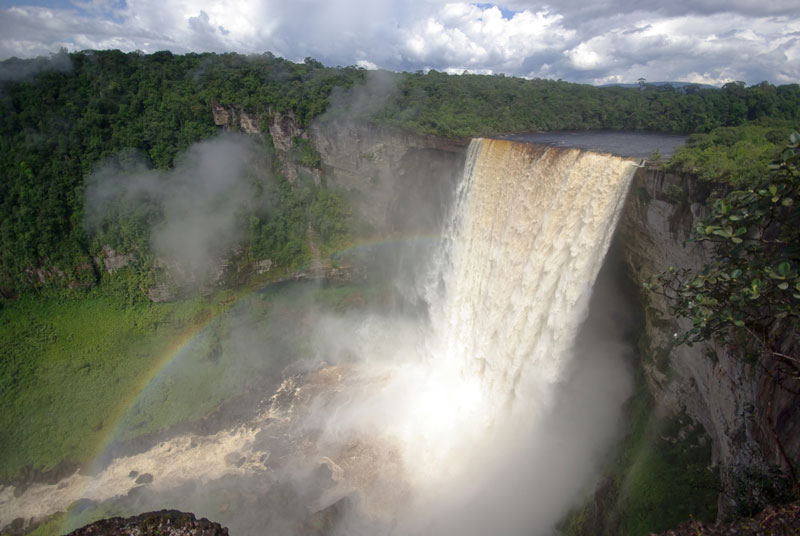This little known English speaking nation is enjoying one of the Latin America and Caribbean region’s highest growth rates, and is now taking the steps to sustain its leading position sustainably.

As one of South America’s smallest countries – with a population just shy of 800,000 – the tiny former British colony of Guyana is also one of the continent’s lesser known nations. Besides being often confused with Guinea or Ghana in Africa (due to the comparable spelling/pronunciation), the fact that it is one of South America’s two officially English speaking countries also sometimes raises doubts about its geographical location.
However, despite the linguistic differences, Guyana shares other important characteristics with its neighbors. Besides the obvious likenesses in physical climate, Guyana’s economic climate has benefited from growth widely enjoyed throughout the region, particularly at time when much of the world has continued to suffer from aftereffects of the global financial crisis.
Including Guyana, LAC (Latin America and Caribbean) countries grew at an average 4.3% in 2004-2011, far outstripping global growth. And while LAC economies managed just 2.6% growth last year, Guyana has remained resilient, registering economic expansion of 5.2% in 2013, the fourth fastest in the region. What’s more, it is predicted to sustain its leading position this year and next.
Although Guyana remains one of South America’s poorest nations – owing to a tiny economy that is traditionally dependent on agriculture and mineral exports and thus highly susceptible to adverse weather conditions and fluctuations in commodity prices – Prime Minister of Guyana Samuel Hinds believes that the country’s recent growth has resulted from finding strength in adversity, as well as a change in fortunes.
“We had a pretty serious flood in 2004,” recalls the Prime Minister. “During that period, the country came together (and) we’ve had continuous growth from that time. The first stage was recovery, but a number of fortunate things also happened. Gold prices were rising and there was also hope of finding oil. This led to the drilling that eventually took place along the Guyana coast (French Guiana, Suriname and Guyana) from 2009 to 2012. In addition, there was demand for rice, and prices for rice were also quite high. All of these factors came together and that has given us a period of growth, which I hope snowballs. Success tends to lead to more success.”
Indeed the country hopes its luck will not run dry when it comes to the ongoing oil exploration, with hopes that a big find could eventually transform economic prospects completely. In the meantime, Guyana has had to continue to rely on its primary sectors. Much of Guyana's growth in recent years has come from a surge in gold production. Agricultural expansion has also helped drive growth. However, in 2013, sugar production – a key source of foreign exchange and Guyana's main employer – dropped to a 23 year old low due to the loss of preferential access to EU markets and a cut in European sugar subsidies.
Given that Guyana is heavily dependent on the other commodities of bauxite, shrimp, timber, and rice, which together with gold and sugar represent 60% of GDP, the government has identified the vulnerability of the country’s economy, and begun to do something about it.
The government’s commitment to sound policies and reforms means that the country is now experiencing shared prosperity, poverty reduction and positive projections for future economic prospects. Meanwhile, a big part of Guyana’s efforts to protect its economy is through protection of its natural environment. With over 80 percent of Guyana’s land area covered by forest, to protect this national asset and to find ways to utilize it as a means to generate revenue and propel economic development, Guyana’s Low Carbon Development Strategy (LCDS has become an essential part of its economic development plan.
“Traditionally, countries in the course of development have had to utilize their forests as a source of materials which brought work opportunities and income,” says PM Hinds. “Guyana and other developing countries, which still have forests, should still get some reward or assistance to avoid going down that road. If they do go down that road, it should be tread in a sustainable way. That reward would help them develop other things. For example, tourism, alternative energy and support for renewable energy.”
While the LCDS aims to facilitate the growth of these industries, the government is also working to attract a greater amount of foreign investment and promote itself as a business destination.
As a member of CARCIOM, it has free trade agreements (FTA) with all of the members of Caribbean community of nations. It borders one of the BRICS, Brazil, with whom it also has an FTA, as well as with Colombia and other countries in the region. This gives Guyana easy access to markets in Latin American and Caribbean – 33 countries with a collective population of 580 million individuals and collective GDP of almost $5 trillion.
Aside from having a highly trainable workforce and an English speaking population – a very attractive asset for US companies – Guyana is only a four hour flight away from Miami.
Another major concern for investors looking to use Guyana as an export base to the region is transport infrastructure. However, the government has invested significant sums to upgrade the country’s infrastructure and there are also numerous plans to modernize and expand the country’s logistics framework. An important component of this plan is the paving of the Linden-Lethem road, which will facilitate integration and sustainable development of the hinterland, as well as improvements to port facilities and the Cheddi Jagan International Airport.
Although there is still undoubtedly a long way to go for Guyana, it is certainly a country on the up. And If people weren’t overly aware of this tiny South American country before, they are certainly sitting up and taking notice of this developing economic success story now.
1 COMMENT
Good news for Guyana. I hope it continues.